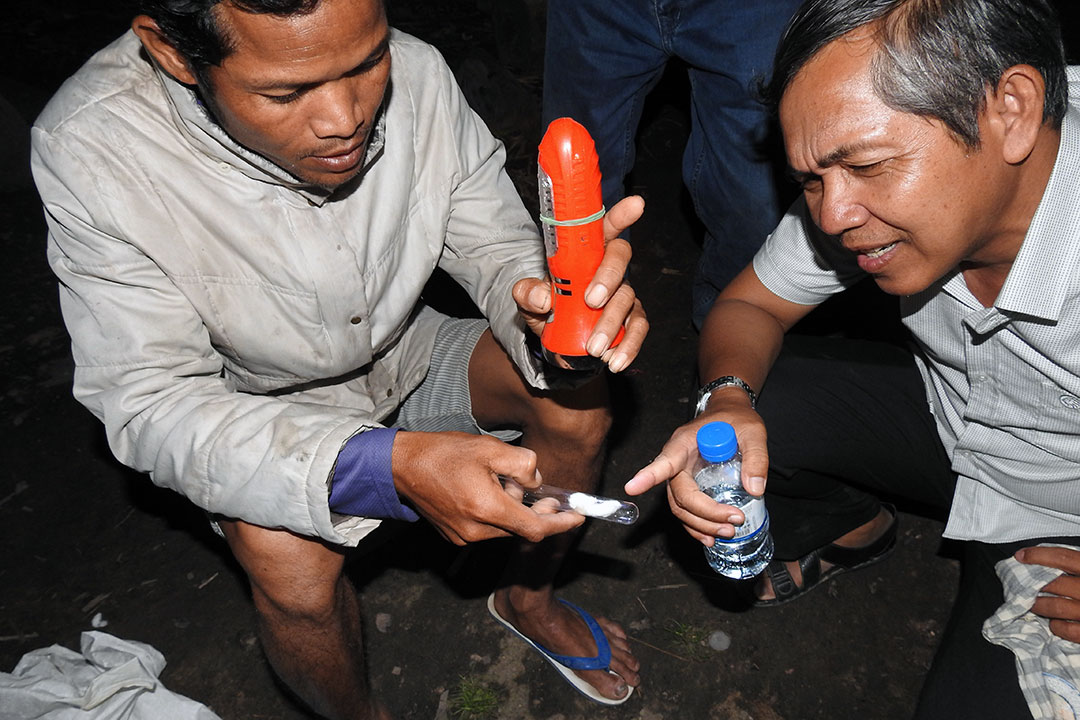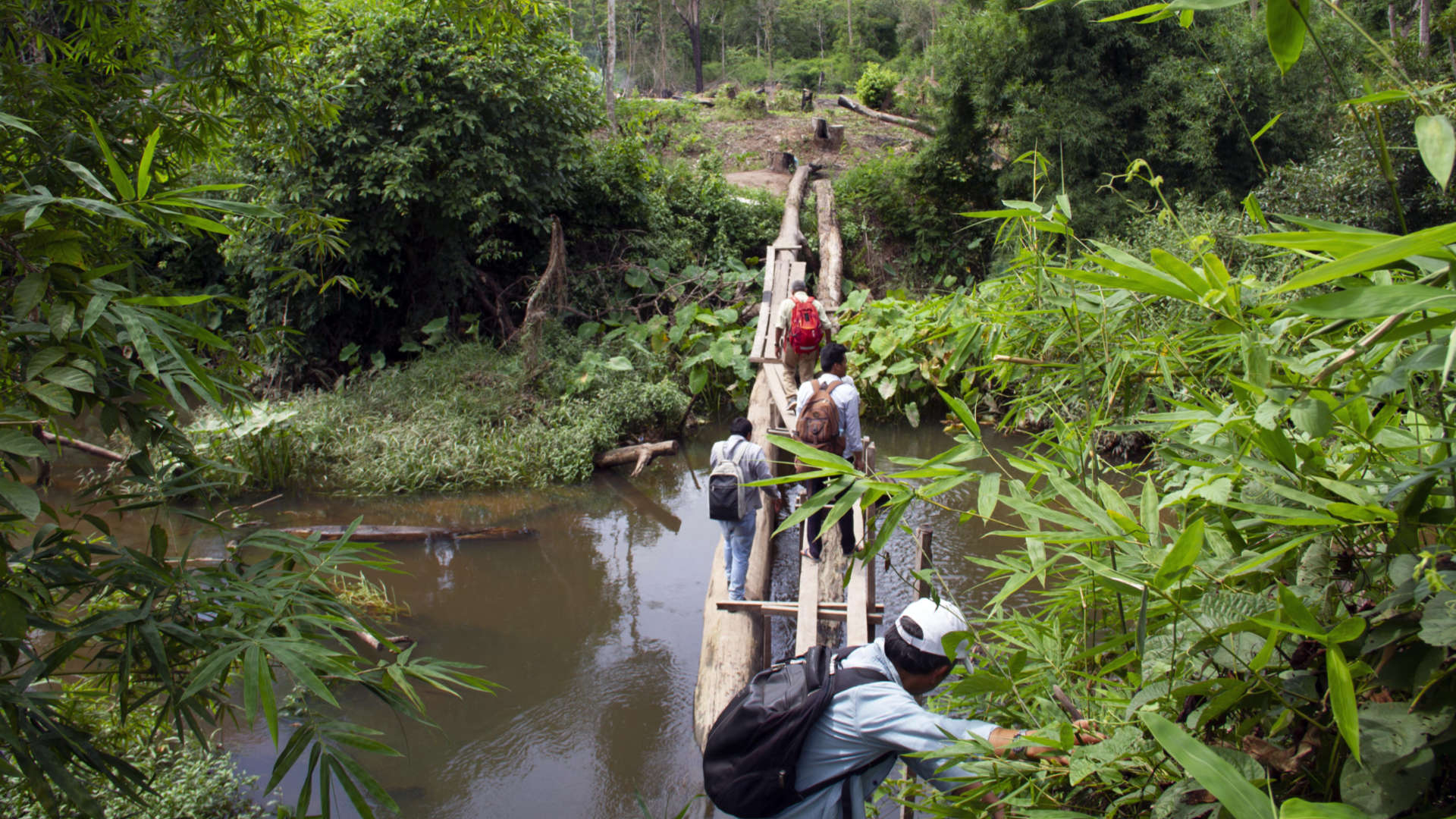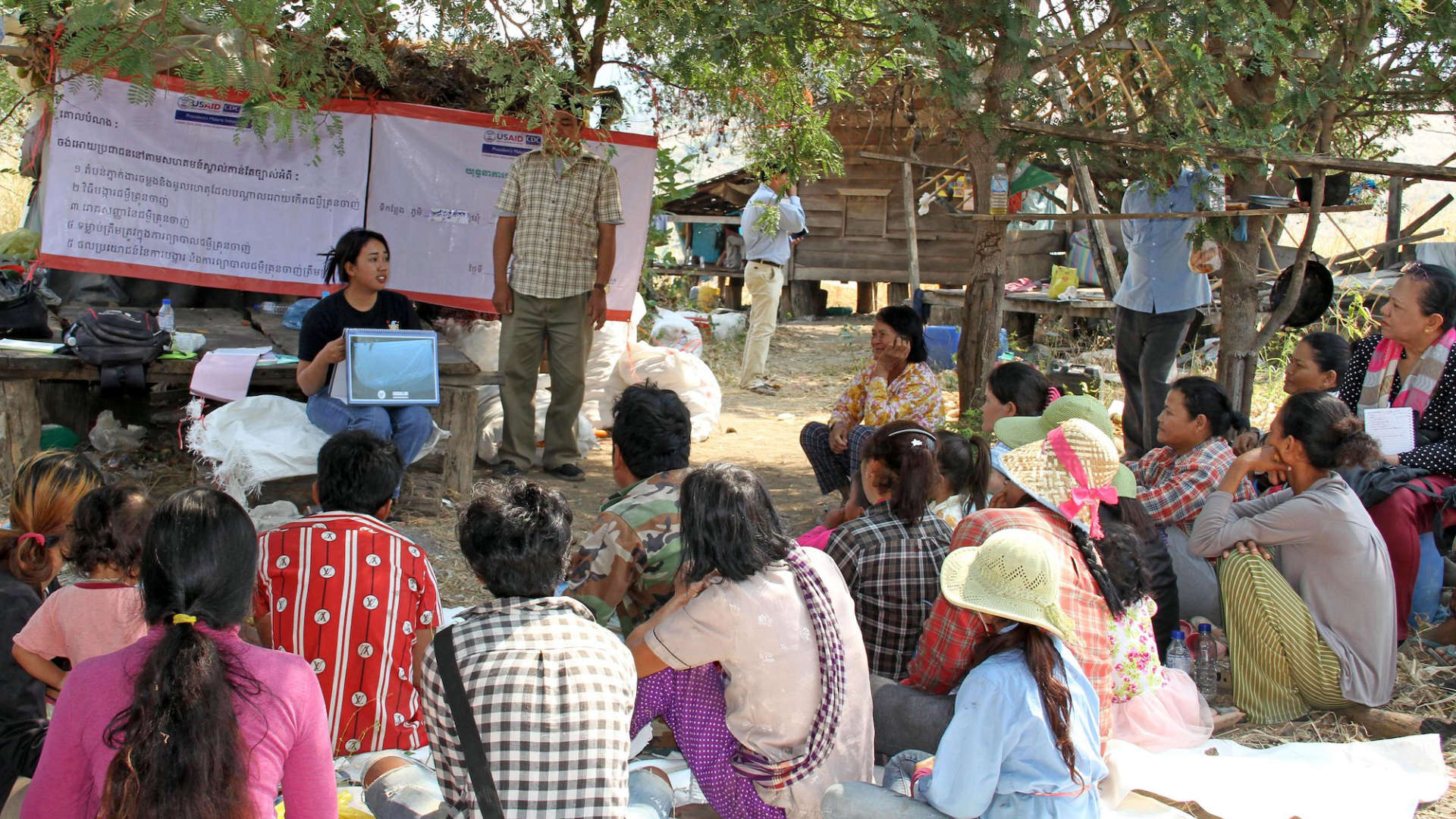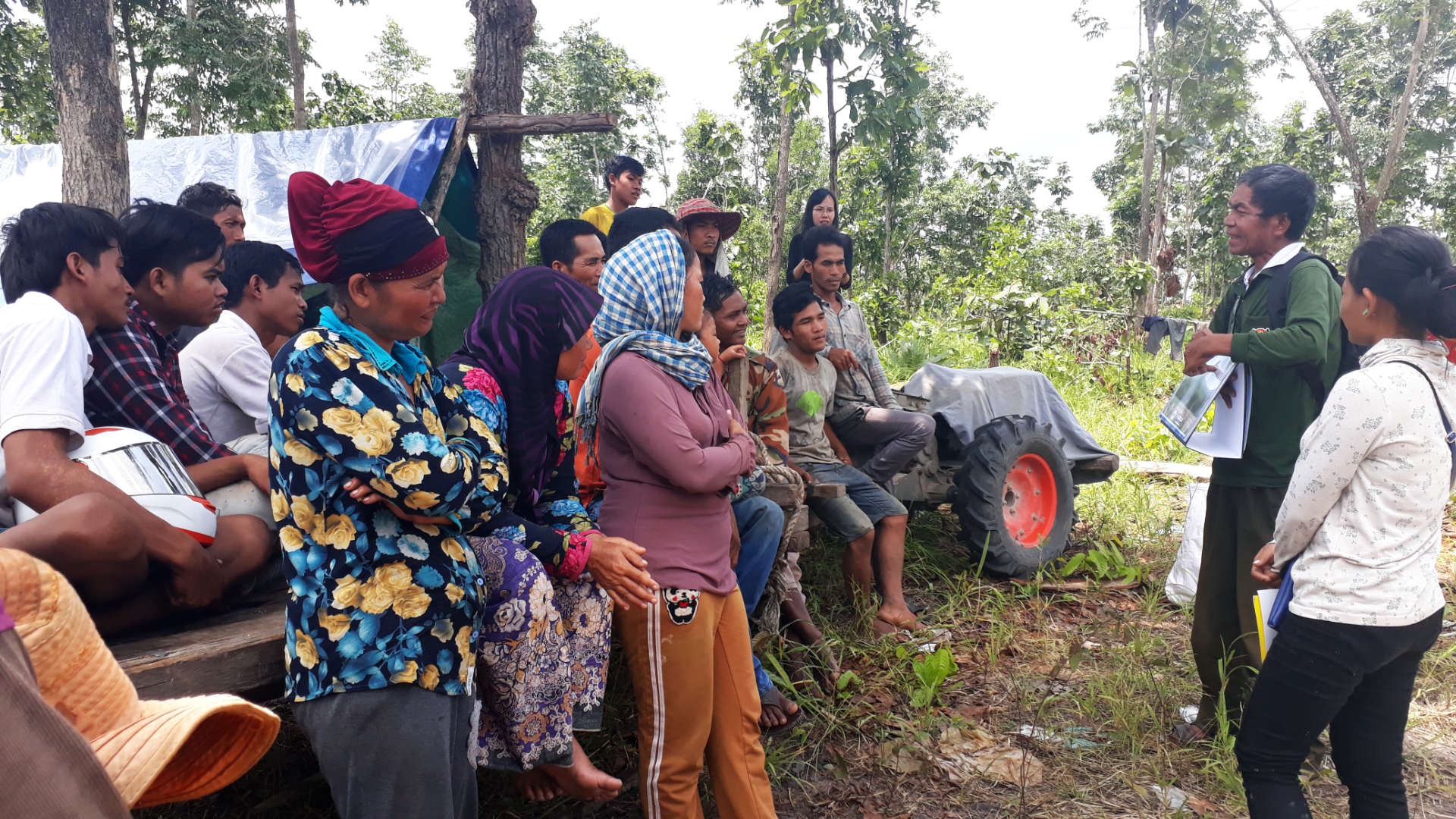Effective malaria prevention requires several interventions, a key one of which is understanding and monitoring mosquito behavior and insecticide resistance. This includes gathering accurate information about species composition, seasonality, larval habitats and behaviors, including their host biting and resting preferences. This is called mosquito bionomics.
But in Cambodia, current vector bionomic information is not widely available to plan malaria control interventions in rural areas where malaria is endemic. Cambodia’s entomology expertise is centralized primarily with a small cadre of well-trained staff at the central level, making routine monitoring in remote areas a challenge.
Given this, the URC-led USAID/PMI Cambodia Malaria Elimination Project (CMEP) decided to enlist residents of the village of Mul Chas in Pursat Province to work as volunteer mosquito collectors to conduct surveillance alongside both provincial and central-level staff.
Trained for All-Night Mosquito Surveillance
CMEP and the Cambodian National Center for Malaria Control, Parasitology and Entomology (CNM) conducted a vector bionomics study in Mul Chas village, Phnom Kravanh Operational District (OD) as part of their ongoing entomological surveillance work. The village, located in a forest fringe area, is inhabited by a highly mobile population of mostly forest goers and consistently has suffered from a high malaria prevalence.
The project provided field entomological monitoring training for Provincial Health Department (PHD) and OD staff and for village volunteers. The tasks were not quick or easy: The volunteers were to monitor three mosquito collection sites – cattle bait traps, human landing collections, and CDC light traps – for five days each month from dusk to dawn from October 2018 through September 2019. When working all night, the volunteers were required to sit patiently waiting for mosquitoes, collecting and properly preserving them according to strict guidance and protocols. CNM, PHD, OD, and CMEP staff provided close supervision.
Volunteers Performed Better than Expected
One of the volunteers, Kuon Koeun, lives in the village with his mother and youngest sister. He was born to a farming family and works as a farmer and logger to support his family.
”When we were first asked about this we were really surprised because we knew only to kill a few mosquitoes when they trouble us and never thought of catching them,” Koeun said. “After the training at the office and some training in the village we were really confident.”
Koeun said that, despite the slow nature of the task, they were committed to finishing it.
“It was not easy on the first few nights, especially sitting outside for hours in the same place catching all the mosquitoes coming to bite us. But we were really helped and guided by our supervisors. We helped collect mosquitoes from cow traps hourly each night. That was really a tedious job as we got many mosquitoes each hour. Light traps were also set up in the locations in the evenings and collected in the mornings.”
CNM and CMEP doubted the volunteers’ ability to perform the tasks. But within days, they performed beyond expectations, collecting more than 11,000 mosquitoes in the village. This could not have been achieved by CNM or PHD staff alone.
The volunteers also saw more value in vector control measures, such as long-lasting insecticidal nets (LLIN) and promotion of behavior change amongst the villagers.
“It was surprising to see so many mosquitoes coming to bite us at night,” said Koeun. “This helped us learn the importance of using a net at night and we started passing this message to our village community. We think that helped increase net usage in the village. We also learned from training that more malaria mosquitoes live in forest areas. As many forest goers go through this village each day, we volunteered to share that message to them to increase their LLIN usage in the forest.”
This and other CMEP efforts are helping Cambodia reach the goal of malaria elimination nationwide by 2025.



